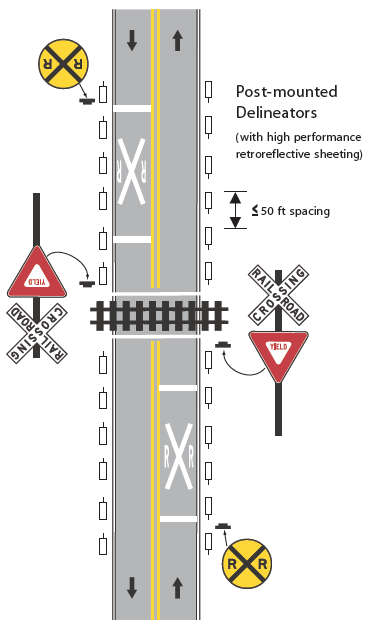U.S. Department of Transportation
Federal Highway Administration
1200 New Jersey Avenue, SE
Washington, DC 20590
202-366-4000
Proven Practices
For rural passive grade crossings that are not illuminated, it is recommended that the approach be delineated with post-mounted delineators spaced 50 ft or closer together on the right shoulder, from the location of the Railroad Advance Warning sign (W10-1) to the crossbuck, and extending an equal distance beyond the crossbuck (as illustrated in Figure 68).

Figure 68. Recommended placement of post-mounted delineators
The rationale and supporting evidence for these treatments can be found beginning on page 332 of the Handbook.
Illumination at a crossing may be effective in reducing nighttime collisions. Illuminating most crossings is technically feasible because more than 90 percent of all crossings have commercial power available. Illumination may be effective under the following conditions:
Luminaires may provide a low-cost alternative to active traffic control devices on industrial or mine tracks where switching operations are carried out at night.
Luminaire supports should be placed in accordance with the principles in the Roadside Design Guide and NCHRP Report 350. If they are placed in the clear zone on a high-speed road, they should be breakaway.
The rationale and supporting evidence for these treatments can be found beginning on page 343 of the Handbook.
